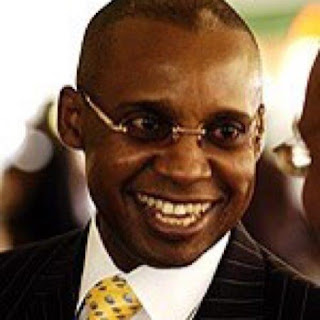Kenya and Ethiopia in epic Economic Rivalry
 |
| Ethiopian Railways Electric SGR train |
The Rivalry between Ethiopia and Kenya in international athletics is also being played in regional economics. The countries are now the dominant economic powerhouses in East Africa. And they keep see-sawing regarding the leader. One moment Ethiopia leads the next year, Kenya leads. As in international athletics, the rivalry makes for economic good news in the region.
The two countries with a combined population of more than 140 million control 64 percent of the regions GDP estimated at $251.54 billion in 2017 and they are the main drivers of robust GDP growth in the region.
Kenya’s GDP $81.2 billion at the end of 2017 following the revision of economic data for 2017 from US$75 billion to US$ 81.2 billion. Ethiopia’s GDP was $80.6 billion in 2017.
This means that as at the end of 2017, Kenya’s economy was larger than Ethiopia’s by $600 million. Both economies are one and a half times larger than Tanzania’s GDP which, according to Trading Economics, quoting World Bank Data, stood at $52.05 billion. Uganda’s GDP stood at US$28.59 billion in 2017 while Rwanda GDP was $9.14 billion.
Analysts estimate that Kenya’s GDP last year rose by more than six percent which would catapult GDP as at the end of last year to $86 billion. Ethiopia’s GDP is also expected to reach the same level, only slightly higher than Kenya’s, making her the leading economy in the region last year.
The two countries were rated by a British accounting institute as dynamic economies which are driving the region’s GDP. And given the growing stability in two countries, their contribution to economic growth in the region is expected to deepen.
 |
| Kenya's diesel-powered SGR train |
Kenya is the only middle-Income country in the region with a GDP per capita standing at more than US$1870 compared to Ethiopia’s $885. But the dynamism of her economy and that of Ethiopia are likely to see the top perch change hands frequently. Their rivalry in economic domination is likely to mimic their rivalry in the international athletic events.
The drivers of this dynamism are economic transformation driven by investment
in infrastructure which has seen a major influx in investments industry. China is the leading investor in both countries. Both countries have invested aggressively in infrastructure especially, electricity generation and transport infrastructure. Both are currently enjoying self-sufficiency in power supply, eliminating the chronic power shortages of the past.
This how the rivalry defines itself: Ethiopia was the first of the blocks on the Standard Gauge Railway with a 700Km line connecting her with the Port of Djibouti. However, Kenya hit the rails with her own SGR just a few months later connecting Mombasa Port, the largest Port in East Africa with Nairobi. The line is now being extended by 120 Km to Naivasha.
And now, Kenya, whose electricity capacity has risen to 2.7 GWn compared to Ethiopia's 2.5 G, is set to electrify its SGR and the adjoining economic zones. The Kenya Electricity Transmission Corporation, KETRACo has applied to NEMA, the environment authority, for approvals to electrify the line.
And now, Kenya, whose electricity capacity has risen to 2.7 GWn compared to Ethiopia's 2.5 G, is set to electrify its SGR and the adjoining economic zones. The Kenya Electricity Transmission Corporation, KETRACo has applied to NEMA, the environment authority, for approvals to electrify the line.
The commissioning of the SGR generated plenty of controversy about the cost difference. However, both are not similar, they are different Classification, with vastly different load capacities and were build on different terrain to different standards. The Kenya line is way superior to the Ethiopian one.
Ethiopia has invested in a light Railway while Kenya is still considering the proposal.
 |
| A Geothermal station In Kenya |
In power generation, Ethiopia is the runaway leader with 6GW Grand Renaissance Dam, GERD, whose Construction is still ongoing. This is the largest hydro dam in Africa. The Gilgel Gibe3 dam with a capacity of 1870 MW, which was commissioned in 2015, is way ahead of all hydro dams in East Africa combined. Ethiopia, with an abundance of Hydro sources, is the leader here while Kenya leads in Wind and geothermal generation.
The 310MW and Lake Turkana Wind power project is the largest wind farm in Africa while Kenya is also the leader in the continent in geothermal generation. It’s commissioning in October last year helped Kenya leapfrog Ethiopia in wind power generated electricity by more than 100 MW. So far Kenya generates 700 MW from geothermal sources, making her the leader in Africa. She is also the leader in East Africa in wind power generation. Kenya’s estimated potential in both geothermal and Wind Power is 10 GW and 3GW respectively.
In Air transport, Ethiopian Airlines is the leader in Africa, leaving Kenya in the third position after South African Airways. It is the only profitable airline in Africa and boasts of a fleet of 105 aircraft compared to Kenya Airways’ 37. Kenya Airways is still recovering from financial headwinds into flew into, four years ago.
Like in international athletics where both have a penchant for long distances, the two countries have a penchant for mega- infrastructure projects. While Ethiopia has GERD, the US$4.8 billion hydro-dam, Kenya has the $23 billion LAPSSET, the transport corridor that incorporates a seaport, Standard Gauge Railway, a highway, and an oil Pipeline. It also involves the development of three Resort cities in Isiolo, Lamu, and Turkana. But it is in manufacturing where the competition will determine who leads. And both are working hard towards setting up industrial zones to attract the manufacturing sector both local and foreign.
Whomever the leader shall turn out to be, the two countries are gearing to become the economic hub of East Africa- and the largest market for her neighbours.



Comments
Post a Comment